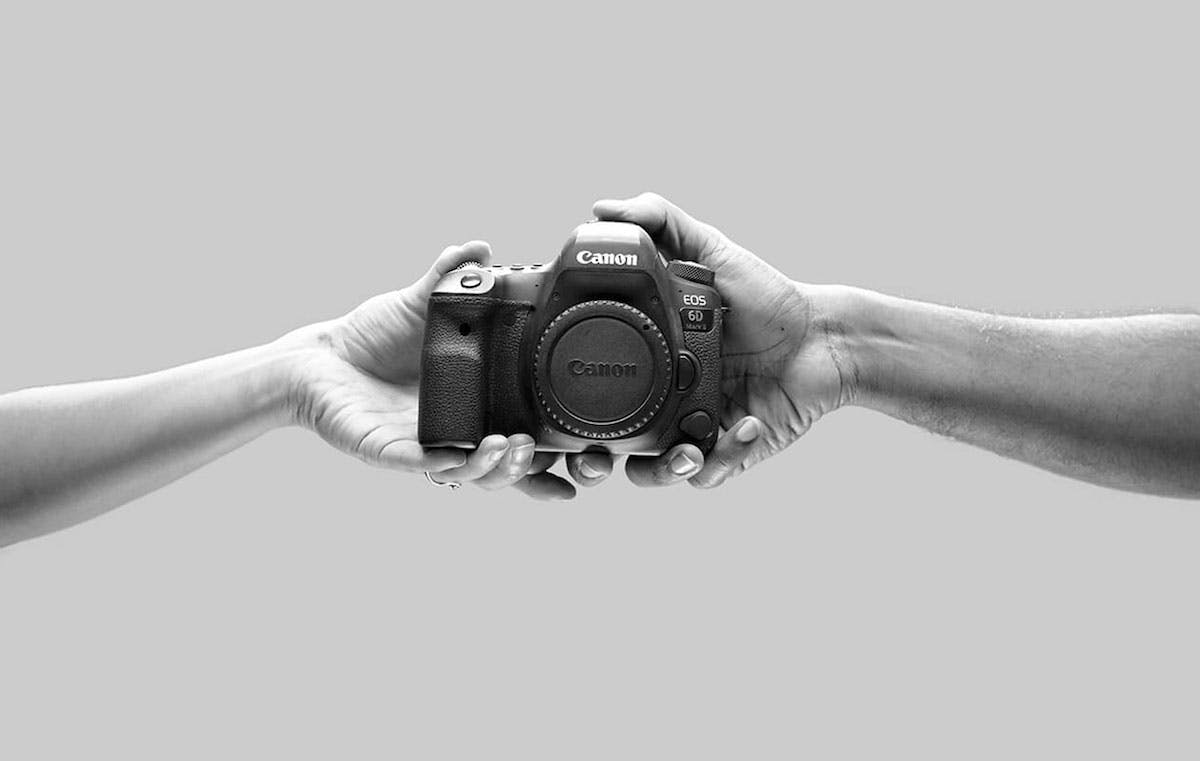How to start with branding your marketplace
Use the brand strategy canvas to find your unique marketplace positioning.
Published on
Last updated on

This article will teach you how to start branding your marketplace using the Brand Strategy Canvas. Check out the marketplace marketing & growth articles library for more tips on growing your business.
Branding is a term that often comes up when marketing, advertising, and PR are discussed. You'll often hear that the most important thing to do is to get your branding right.
If you're not a marketing expert, these three questions will likely pop into your head:
- What exactly is branding?
- Why should I care about my marketplace branding?
- How can I start branding my marketplace?
It would be preposterous to claim that we can give a clear and definite answer to the first question. A plethora of opinions and definitions exist out there, both in academic and business circles. However, we will give you some perspectives on what branding means to different people, and how the more established marketplaces have used branding. This article will also explain why branding is important for your marketplace. Finally, we will go over a method that will allow you to lay the foundation for your branding that is free, and will only cost you a bit of time.
There is a lot of confusion and differing opinions about what branding exactly is. This is mostly due to people talking about different things when they talk about branding. Some apply it only to a product, while others think of it from the perspective of a company. Some think of branding only in terms of visuals, while others look at branding from a more holistic point of view.
In this article, we will take a holistic approach. It is the most useful way to approach the subject with marketplaces in mind.
One of the best holistic definitions for branding is from Shopify, who describe branding as “all of the ways you establish an image of your company in your customers’ eyes”.
This definition is useful because, unlike some other definitions, it doesn’t limit itself to only one way of doing branding—through visual design, for example. Instead, it leaves the door open to any area in which you interact with your customer.
Shopify’s definition also allows us to easily deduct what “brand” means—namely, “the image of your company in your customer's’ eyes”. This image is built up of multiple factors. For starters, there are the factors that are traditionally associated with branding, such as your logo design, the look of your marketplace, your slogan, and other visual elements. Building these by themselves requires a lot of time and effort. Airbnb’s logo, which they call the “Bélo”, is one example. The entire mission of the company is expressed in this one symbol.
But branding can be expressed in other ways as well, such as the way you communicate with your customers. If you run a marketplace for renting surfboards, your tone of voice might be more casual compared to a marketplace for financial experts or legal advice. After all, your tone affects “the image of your company in your customer’s eyes”.
We can also think about even more indirect factors, such as the quality of the listings on your marketplace or the price range of your listings. A boat rental marketplace with only high-end, expensive yachts will have a different brand than one that includes small fishing boats or even rowing boats. This is not to say that one is better than the other, but they are perceived differently by different kinds of customers.
It is important to note that there is almost always a difference between how a company sees their brand themselves and how customers perceive the brand. While a boat rental marketplace with only luxury yachts might see its own brand as being about class and quality, customers might perceive it as posh and overpriced. Or, no matter how often and how well BP rebrands itself, it is doubtful that it will ever be universally seen as an environmentally responsible company.
Even among customers, there is rarely one common perception of a brand. Take McDonald's, one of the world’s best-known brands. Some people love it, while others hate it. Some car owners perceive Toyotas as a affordable, high-quality cars while others see them as cheap. These perceptions are seldomly based on facts, but rather a combination of the different factors mentioned above and the personal goals and values of each respective customer. Your brand simply cannot mean the same thing to everyone.
Because of this, a company’s brand is always targeted at a segment of the population, based on certain characteristics such as age, income, or gender. You need to find the right audience—the people with whom your brand resonates the most. The more specific your targeting, the more likely your branding will resonate. It is especially important for starting companies to have a narrow focus.
Although multiple external perceptions are unavoidable, internally, companies should only have one perception of their own brand. The whole purpose of branding is to mold the customer’s perception to closely match the company’s. This is attempted through “brand positioning”, or “the conceptual place you want to own in the target consumer’s mind”. In other words, it is the value customers associate with your product/company and how they distinguish it from the competition.
It is crucial for a company to have a shared and unified internal understanding of what the brand is. After all, throughout the company, employees need to make daily decisions about a wide variety of things that might affect brand, such as: What feature do we develop next? Do we develop for mobile or for desktop? Apple or Android? What tone do I take with this customer? What do we write about on social media? There are many ways to achieve this common understanding, but a common way is with a written statement called a “brand positioning statement”. This can take many forms: multiple pages, a one-page story, a paragraph, or even just one line.
The exercise at the end of the article will help you write your own positioning statement which you can use to inform your decisions on logo design, slogan, communication tone, product development, and other brand-related activities.
For inspiration, let’s have a look at how some of the more established marketplaces see their own brand. Of course, brand positioning statements are for internal use only, so part of this will be a deductive exercise.
Airbnb
In 2014, Airbnb underwent a much-discussed rebranding. The studio responsible for the rebranding wrote a wonderful deep-dive into the process. For the purpose of this article, we will just focus on the outcome.
The rebranding included a page where the founders describe the new Airbnb: Belong Anywhere. For them, Airbnb is “about home” and “belonging”. They argue that through modernization and urbanization, we have stopped trusting each other and “lost something essential about what it means to be a community”. By using Airbnb, you will be able to get this back by sharing your home and visiting others. Now, this might sound a little bit out there, and you might be wondering how will this help you with your branding for your pet sitters' marketplace. But remember: part of the purpose of branding is to distinguish yourself from the competition. It is easy to see how this focus on the personal and intimate distinguishes Airbnb from a service like Booking.com.
Thumbtack
Thumbtack has made its positioning statement available online. Thumbtack sees itself as a service that helps you “find local professionals for pretty much anything”. They target both experienced customers and first-timers with their description: “Today, millions of customers use Thumbtack technology to find and hire small businesses across the country”. The service aims to make hiring a professional as easy as possible.
Lyft
The transportation company Lyft has put a lot of work into branding, mostly in order to arm itself against its main competitor, Uber. Unlike Uber’s brand of being “everyone’s private driver”, Lyft profiled itself as “your friend with a car”. Lyft encourages people to sit in the front seat to connect with the driver and, unlike Uber, allows tipping drivers. This might not appeal to everyone, but Lyft now occupies a certain place in people’s minds that is different from Uber, even though they essentially provide the same service.
With the three examples above, we briefly touched on the possible benefits that branding can have for a company. Let’s take a closer look at the benefits.
For Airbnb, branding helps them distinguish themselves from other short-term rental services and be part of a community that wants to feel they belong anywhere. Before the rebranding project of 2014, Airbnb had already profited greatly from good branding decisions when they decided to improve the quality of the pictures in their listings. Airbnb realized that having professional, high-quality photographs of their listings was key to separating themselves from more established apartment listings sites such as craigslist. Craigslist’s brand was associated with seediness, while Airbnb’s became one of trustworthiness. The listings with professional pictures soon received two to three times as many bookings as listings without professional pictures.
Branding allows Lyft to compete with a much stronger competitor, Uber, by appealing to a community of people who prefer a more amicable company. Rather than being the cheapest, Lyft wants to be the friendliest. A well-funded company like Uber can compete on pricing by slashing its prices tomorrow, but a brand is much harder to compete with. Even with a higher price, people might still choose Lyft over Uber. Lyft not only chose this branding to attract more customers, but to also attract drivers. And as we know, building supply is one of the hardest parts of operating a marketplace, so the benefits are obvious.
Thumbtack's aim with its branding is to create repeat customers. They want to go the extra mile for their customers, making tasks that seem very hard very easy. As Julie Supan, YouTube’s first head of marketing, points out in this interview, this is crucial because many of Thumbtack's potential customers have a negative perception of contractors: they are difficult to reach, slow in communication, and unreliable. By going the extra mile and getting customers exactly what they need, Thumbtack hopes to turn first-timers into repeat customers, a tactic most famously employed by Zappos. And for a marketplace, repeat customers are where the money is.
Since you probably don’t have the resources to have a brand agency send four people to work on your brand for 3 months, we have a method that better matches the needs of a fledgling marketplace: the branding strategy canvas.
Developed by Archer Malmo Ventures, an ad agency, the canvas is in the style of the business model canvas. By thinking about a series of basic questions that fit onto one A4, the answers help you form strategic insights into your branding.
What you need
- 2–4 people: You need at least one other person to spark discussion. If you are a solo entrepreneur, get someone whose opinion you respect and who knows your marketplace idea.
- A print-out of the canvas for each person: We recommend doing this work on paper rather than on your computer. The analog form offers less distractions and, more importantly, you will see how you got to the end result from your scratched out answers.
- Pens and pencils
- About 2 hours
The outline of the workshop
- 60 minutes: each participant fills in their sheet individually.
- 30 minutes: compare your answers question by question and compile the best answers into one sheet.
- 30 minutes: write the brand positioning statement together, which you distill from the collective answers.
Let's go through the canvas, imagining that we're designing the brand positioning statement for a rental marketplace for luxury yachts, “Floating Castles”.
The most important parts of the canvas are the questions marked with the letters A-E. They will make up the ingredients of your brand positioning statement. We’ll go through them one by one, and finally compose the brand positioning statement.
Customer/User Insight (A)
This contains important questions about your targeted audience. Describe the people that you want to resonate your branding with.
For our luxury yachts rental marketplace, this could look something like this:
- Our customers enjoy luxury and are comfortable booking online.
- Although they do like to get a good deal, they value comfort over price. They would rather pay a bit more and get a smooth booking experience.
- They want to experience the comfort of having a luxurious yacht without the pains of owning one.
Competitive Environment (C)
What are the competing forces?
- Local marinas, which have inferior online booking services.
- Large inventory boat rental sites for all kinds of boats.
- Commercial yacht rental agencies that charge high fees.
Company/Product Features (B)
What is the simplest description of your product? What does it do?
Think of this as if you were writing copy for a 10 second radio ad.
- Floating Castles is an online marketplace for renting luxury yachts. Our handpicked catalogue and seamless booking flow make it the easiest way to find and book the perfect yacht.
Rational benefits (C)(D)
What are the tangible benefits of the product? Which benefit is unique and most important?
For this answer, think of how your product stands out from the competition. What is your unique value proposition?
- A pre-screened inventory, allowing only true luxury yachts, saving time in wading through hundreds of lower-quality listings.
- Getting immediate feedback about availability instead of back and forth emailing.
- The opportunity to book your dream yacht within seconds, on any device or platform.
- Secure payments.
Emotional Benefits (E)
What are the intangible benefits of the product? Which benefit is unique or most important?
What expectations and wishes do your customers have, and how do you fulfill them?
- Enjoy browsing through the selection.
- Trust in the payment process.
- Reducing stress and saving time in the booking process.
Brand Positioning Statement
After discussing the answers in each field with your partners and selecting the most convincing parts, you can now turn these into your brand positioning statement. The method says that the outcome should meet all of these five criteria: important, unique, believable, actionable, sustainable.
For Floating Castles, we could end up with a statement like this:
For luxury lovers, who enjoy yachting but don’t want to own a boat and are used to booking online,
Floating Castles is the online yacht rental service
That offers a high quality selection and an easy, trustworthy way of booking
Because we select only the best yachts, and offer the most modern and secure payment options
So that every customer can book their dream yachting trip
That's it! If you want another example of how to use the brand strategy canvas, check out this slideshare presentation made by Archer Malmo where they use Zappos as an example.
Once you have come up with your brand positioning statement and are satisfied with it, be sure to make it available to everyone who works for or with you. This one sentence should also help you get started with your branding and inform your choices in many types of decisions: finding new providers, choosing a channel to advertise on, designing your content, choosing the colors for your website. You will be surprised how often you can fall back to this document.
You might also like...

How to communicate your marketplace value proposition
Making sure every visitor knows how your marketplace can help them.

"Network effects are key to successful marketplaces," says James Currier
The managing partner of NFX Guild believes a new class of businesses—ones that combine aspects from marketplaces and social networks—is being created.

Why Canon Australia ventured into the sharing economy
Kyōyū, Canon's first-ever gear-sharing marketplace, was built on Sharetribe. What benefits does the Fortune 500 company see in the sharing economy?
Start your 14-day free trial
Create a marketplace today!
- Launch quickly, without coding
- Extend infinitely
- Scale to any size
No credit card required
